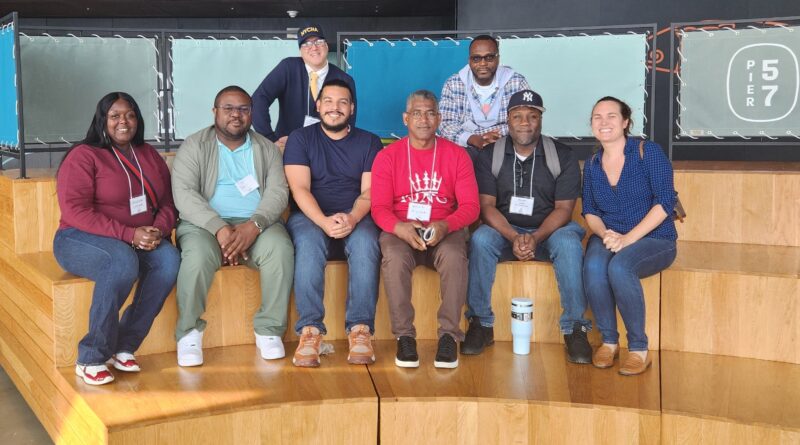NYCHA Pest Management Head Among Speakers at Urban Rat Summit
The first-ever National Urban Rat Summit in New York City called on a broad range of experts from cities around the nation to share best practices on rodent mitigation, including efforts to tackle urban rat challenges using innovative methods.
Presented in partnership with the NYC Department of Health and Mental Hygiene (DOHMH) and the State Integrated Pest Management Program at Cornell University, the summit was held September 18-19 at Manhattan’s Pier 57. From researchers at academic institutions to municipal pest control managers, experts came together to help advance solutions for urban rat management.
The inaugural event came as the City continues to make progress in implementing a holistic integrated pest management strategy, focused on identifying rat hotspots and removing conditions that allow rats to thrive.
“We were thrilled to create a space for academic researchers and municipalities to come together and have meaningful dialogue about a path towards sustainable, urban rat reduction,” Citywide Director of Rodent Mitigation Kathy Corradi said. “This collaborative, science-based approach to New York City’s rat mitigation, along with the tremendous efforts from city agencies, will ensure an improved quality of life for all New Yorkers.”
NYCHA’s Chief Executive Officer Lisa Bova-Hiatt noted that pest management – a pillar area of the 2019 HUD Agreement – represents a significant priority in the Authority’s mission to provide decent, affordable housing to residents.
“Through the use of our integrated pest management strategy, NYCHA has experienced a 62 percent decrease in rodent burrows at developments in the City’s Neighborhood Rat Reduction Plan since 2018, ultimately improving the quality of residents’ lives,” Ms. Bova-Hiatt said. “Our work continues, and we were very excited to attend the inaugural National Urban Rat Summit to collaborate with other agencies facing similar challenges and continue honing our expertise in this area.”
NYCHA’s Vice President of Pest Management Josephine Bartlett also pointed to the considerable reduction in rat burrows at 100 developments with the largest rat populations, adding that the Pest Management Department is shifting its strategies to continue making improvements and adopting more environmental practices. Such efforts include the use of carbon dioxide machines, snap traps with sensors, and other methods to target rats in burrows.
At the summit, Ms. Bartlett discussed the key challenges of municipal rat mitigation as it relates to public housing. Other speakers addressed rat mitigation in areas such as parks, sewers, construction sites, residential yards/alleys, and refuse collections.
In addition to rolling out training and employing more efficient methods of treating grounds, NYCHA Pest Management has launched the first-of-its-kind rat extermination team. The specialized unit is focused on responding to emergency calls throughout the Authority for potential rat sightings or markings in apartments, trash compactors, and development grounds.
During her presentation, Ms. Bartlett noted that NYCHA’s Pest Management team consists of more than 300 people working in all boroughs to manage a portfolio of large, diverse spaces across 300 square miles. The team responds to resident calls and work orders not just for rats but also for a wide variety of pests and infestation levels.
Following the summit presentations, speakers led brainstorming groups with participants to discuss best management practices and share ideas on various approaches to urban rat mitigation.
“We heard from many experts about different topics, from reducing our dependence on second-generation pesticides to using sensors as a monitoring tool and rat-born illnesses,” Ms. Bartlett said. “It got the whole NYCHA team thinking about new approaches we want to tackle, and we are excited to do so.”
Photo caption: Vice President of Pest Management Josephine Bartlett (far right) with some members of NYCHA’s Pest Management team at the National Urban Rat Summit.







